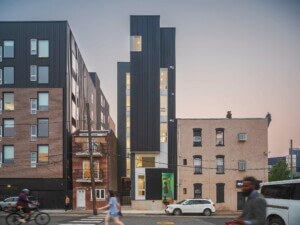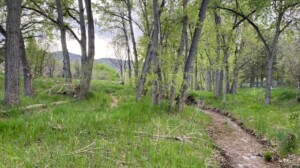GWWO Architects, a Baltimore-based specialist in cultural and educational facilities including historic site–anchoring interpretive centers, has shared imagery and design details for the Rookery, a $4.2 million expansion of The Nature Place, home base for environmental conservation nonprofit Berks Nature, that debuted this past spring at Angelica Creek Park in Reading, Pennsylvania.
Also designed by GWWO, the LEED Gold–certified Nature Place first opened in 2017 to both local and critical acclaim (it won AIA Baltimore’s Good Design = Good Business Award) and enabled Berks Nature to expand its environmental stewardship–focused programming. The organization, however, quickly discovered that it needed even more space to meet increased demand for field trips, summer camps, and community-based events. Initially, the construction of a new standalone pavilion large enough to accommodate 300 students was considered; however, it soon became apparent to Berks Nature and the GWWO design team that an addition with indoor-outdoor educational space situated above an existing preschool building made the most sense as it “increased synergies within the building, reduced site disturbance, and made the project more environmentally and economically viable,” per a press release.
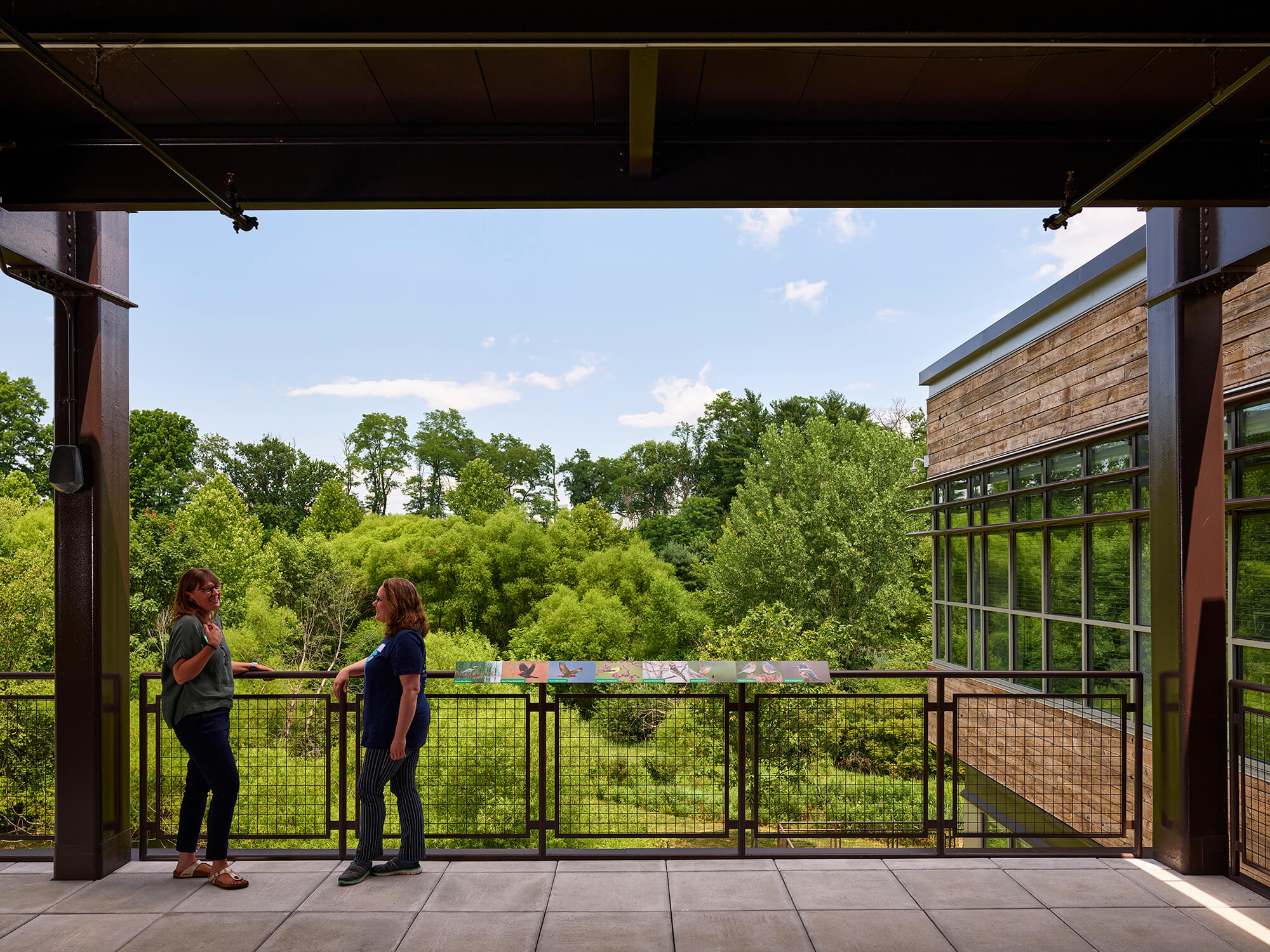
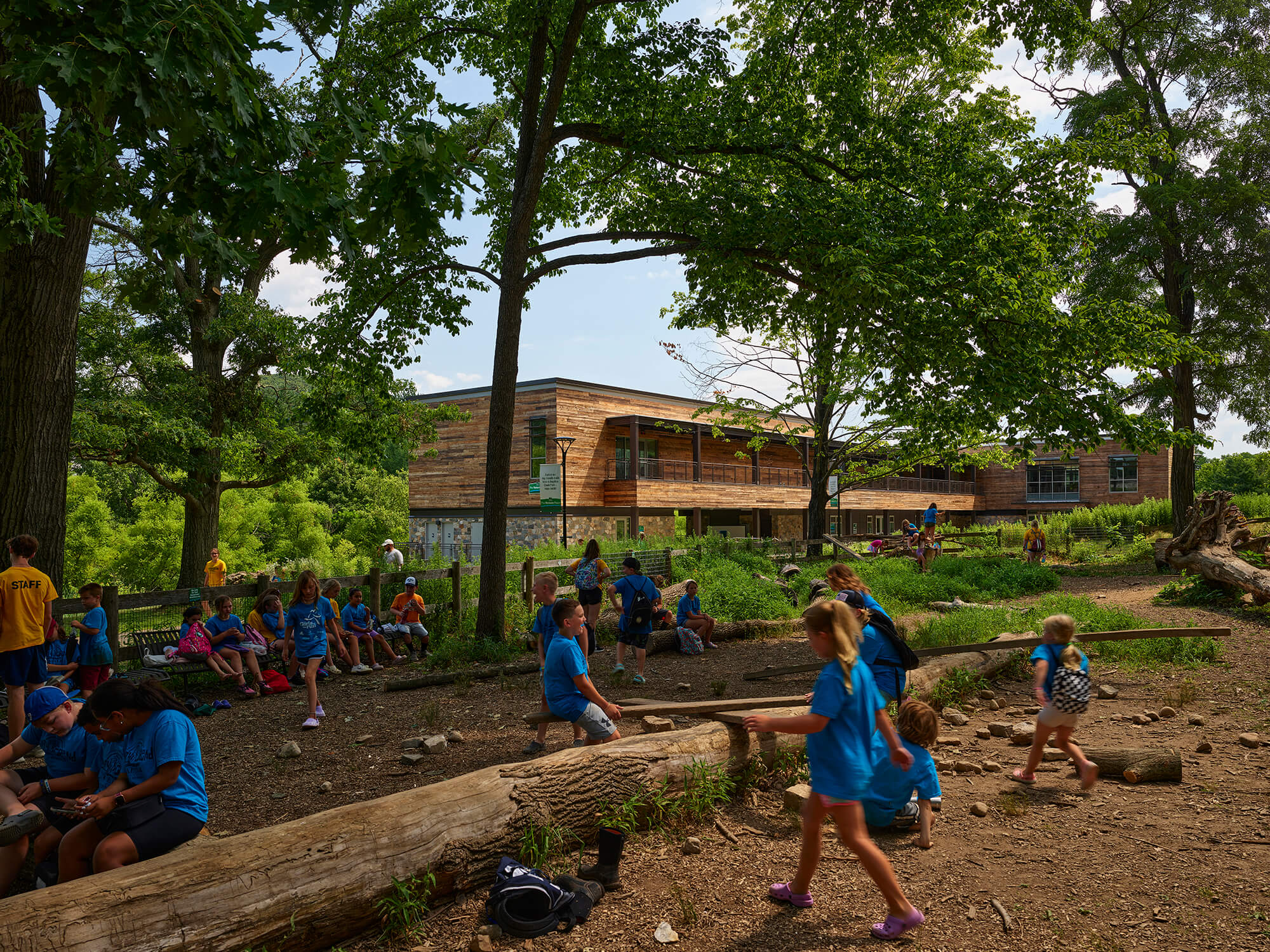
The resultant Rookery, a word that describes a colony or breeding place for birds or animals, increases Berks Nature’s available programming space fivefold with three new environmental education–dedicated spaces. Topping the roof of the existing building is a 2,100-square-foot covered outdoor classroom connected to a 2,200-square-foot indoor classroom via an operable glass wall. Together, these new indoor-outdoor learning spaces can accommodate up to 300 guests, much like what was envisioned for the original pavilion scheme. Joining the two new classrooms spaces is a breezeway located below the addition that provides both unobstructed views of the surrounding wetland ecosystem and additional flexible programming space (plus an all-important fireplace for s’more-roasting.)
“A rookery is a colony of nests. We envision the Rookery as a gathering place for our entire community of conservation allies,” said Berks Nature president Kim Murphy. “This additional space enables Berks Nature to significantly increase our impact in the community by helping to connect thousands of people to nature.”
“This project plays an integral role in both Berks Nature’s and GWWO’s missions to meaningfully connect people to their environment,” added Terry Squyres, principal at GWWO.
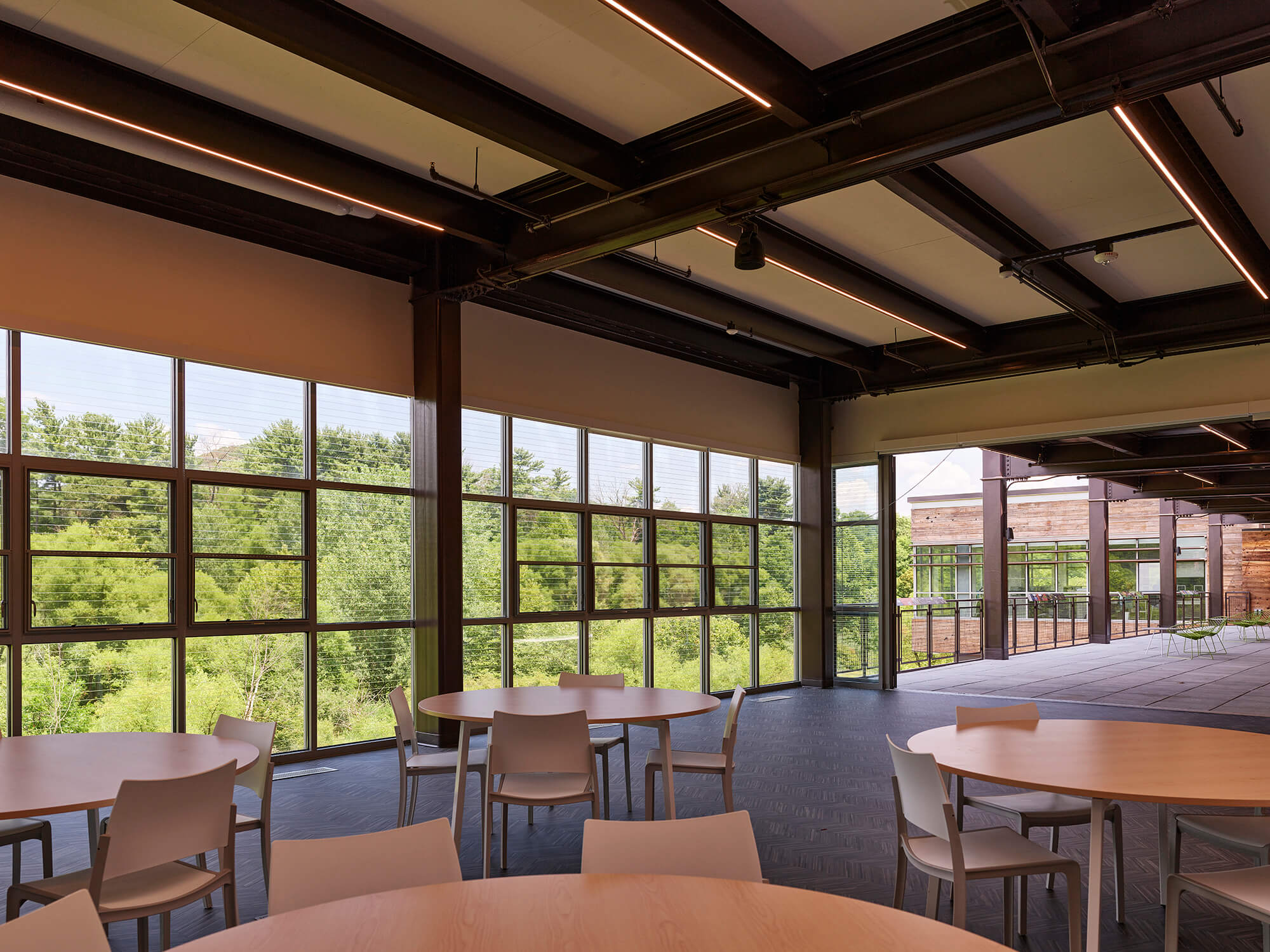
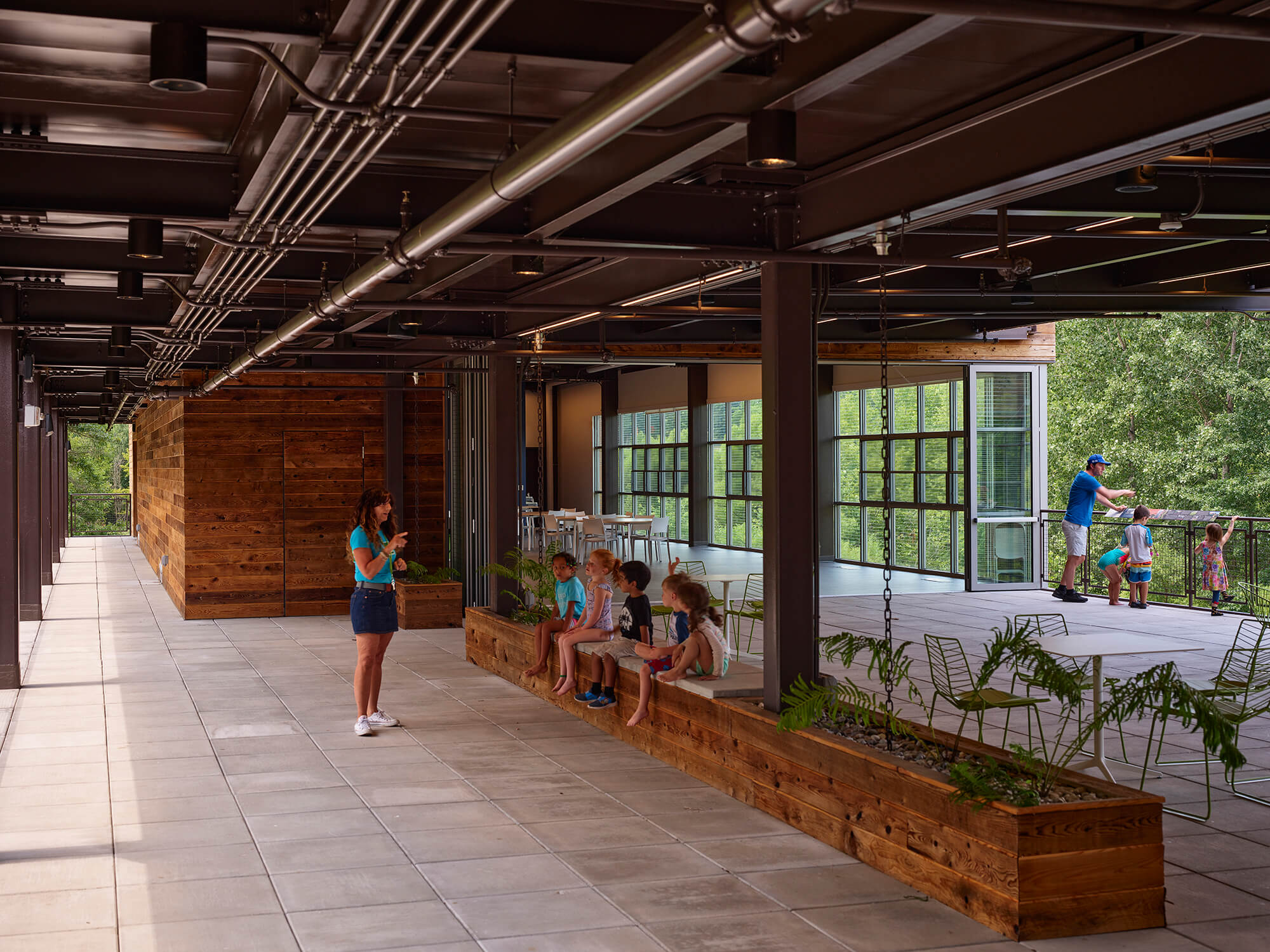
Featuring the same reclaimed mushroom wood cladding as the original 2017 Nature Place building, the addition appears as “natural extension” of the preceding project and blends into the sylvan wetland environment of the 90-acre Angelica Creek Park, a popular birdwatching and nature-viewing destination comanaged by Berks Nature and Alvernia University.
“Open air spaces on the first and second floor keep the addition feeling light while doubling the total building area,” GWWO described. “Connecting to nature as a central concept is evident in everything from the built form to the materials to the interpretive signage and the experience of being immersed in nature when inside the Rookery classroom or deck.” The Rookery, naturally, features a slew of conservation-minded features—rain barrels, rain chains, daylight sensors, bird-friendly acid glazing, and the use of reclaimed and recycled materials throughout—that not only collective help Berks Nature to continue to tread lightly on the site but are also meant to inspire visitors that might be interested in employing similar sustainable design strategies in their homes, according to GWWO. (Interpretive signage and wall graphics help to illustrate the benefits of these different strategies.)
During the Rookery’s first four months in existence, Berks Nature hosted more than 3,000 students on field trips with another 1,350 students are set to visit the Nature Place this fall—that’s a 67 percent increase over 2019 (the last comparable year due to the pandemic.) Berks Nature’s enrollment for its popular summertime Eco-Camps program also increased by 41 percent over 2021.
In addition to its educational programming at The Nature Place campus at Angelica Creek Park, Berks Nature, a venerable organization first established in 1974, is focused on land preservation, water protection, trail management, community gardens, and other related activities throughout Berks County. (Not to be confused with the New Jersey–adjacent Bucks County, Berks County is located in southeastern Pennsylvania to the northwest of Philadelphia.)
Other nature centers and nature-focused educational facilities designed by GWWO, most but not all in the Mid-Atlantic, include the Robinson Nature Center in Columbia, Maryland; the DuPont Environmental Education Center in Wilmington, Delaware; Killens Pond Nature Center, also in Delaware; the Everglades Visitor Center at Florida’s Everglades National Park, and Cylburn Arboretum Vollmer Center in Baltimore.









